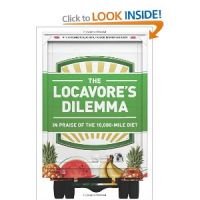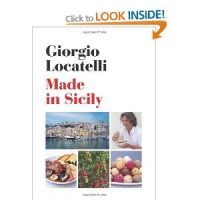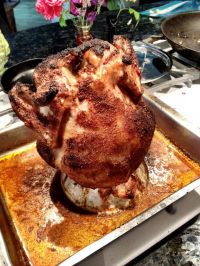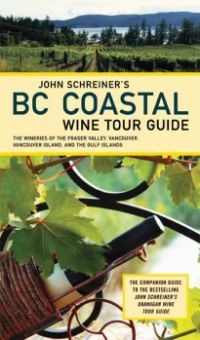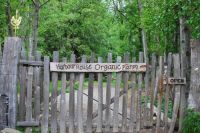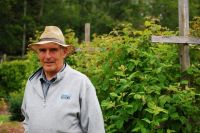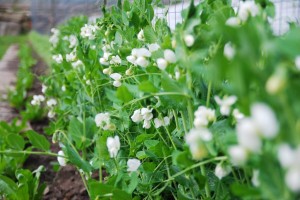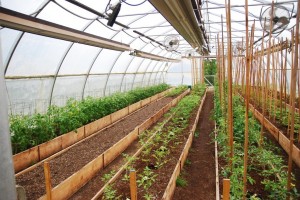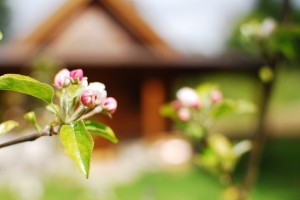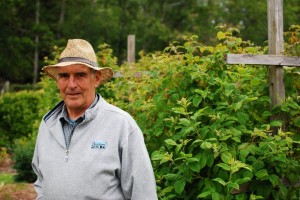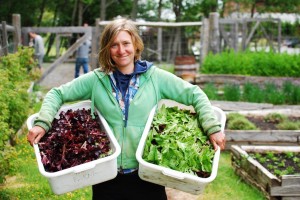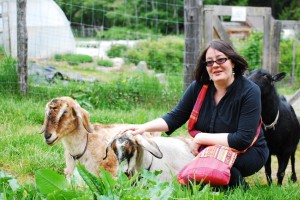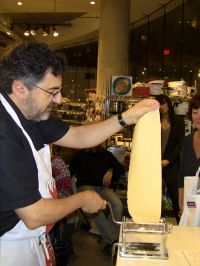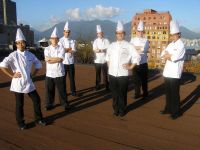 Sunday Morning Attempt to Read
Sunday Morning Attempt to Read
For many of us, summer vacation is the best time of year for finally getting around to reading that pile of books that has been building by the bedside, or in my case, cooking some recipes from cookbooks he’s been accumulating. Today on Food Matters Jo-Ann Roberts and I discussed some recommendations for a summer reading list with food as the main subject matter, of course.
In the summer, I’ve been known to plow through entire collections of murder mysteries from particular authors within a few weeks, and then I always have some new cookbooks on the go, as well as some magazine and periodical reading that I never seem to get around to.
But this is the time of year when we spend a lot more time at farmers’ markets and farm stands, and you will see more and more vendors and farmers advertising their produce as organic, or certified organic or spray-free, both at the markets and in grocery stores. So I’m encouraging people to do a little heavy reading first, before you do your grocery shopping. There’s a fascinating read in the business section of the New York Times that is all about what writer Stephanie Strom calls ‘Big Food’ and how it has virtually taken control of the organic food industry in North America. It’s also about a man named Michael J. Potter, founder of the company called Eden Foods, and how he thinks the whole idea of certified organic is going down the drain and how members of the National Organic Standards Board in the U-S keep the needs of Big Food business above the needs of the consumer who wants to buy more certified organic foods. The article reveals how there are more than 250 non-organic ingredients that are now allowed to be in foods certified organic by that National organization.
There was a great debate sparked in the pages of the Globe and Mail recently, with a detailed story in the Focus section about growing more food closer to where people eat it; so an emphasis on urban gardening, community gardens, landscaping city owned lands with fruit trees and vegetables free to whoever wants to pick them. One page away from that story was an opinion column by Margaret Wente who argues that producing food locally is the most wasteful way to feed the human race, and it’s also bad for the environment.
In her article she mentions a new book that I have now added to my list for this summer called The Locavore’s Dilemma, a cheeky take on Michael Pollan’s bestselling book called The Omnivore’s Dilemma on his return to locally-produced food. Wente says The Locavore’s Dilemma, by authors Pierre Desrochers and Hiroko Shimizu, systematically dismantles the cult of locavorism. Desrochers is an economic geographer and Shimizu is a policy analyst. The subtitle of the book is ‘In Praise of the 10 Thousand Mile Diet’, a shot at the 100-Mile Diet phrase we’ve become accustomed to. A blurb for the book states that it is, “Deliberately provocative, but based on scrupulous research and incontrovertible scientific evidence”.
But as with so many issues, there is always two sides to the story. For a read that once again praises the value of locally raised foods from a number of perspectives you could look up ‘Public Produce, The New Urban Agriculture’, a book published in 2009 by California-based urban designer Darrin Nordahl, who makes the point that ‘we’ve finally realized that the way we eat and procure our food is drastically affecting our quality of life.’ He advocates more growing of food in public grounds.
For something a little lighter: I have a fairly large cookbook collection and I’ve been becoming more fascinated by the history of cookbooks. So this summer I am looking forward to browsing through a copy of “The Cookbook Library: Four Centuries of the Cooks, Writers, and Recipes That Made the Modern Cookbook”. It is co-authored in part by Anne Willan, the founder of the La Varenne cooking school. By the time I finish this book I expect I will have a much better idea of how our food culture has evolved through the years because of cookbooks AND find out when forks were invented.
I am always dreaming of another visit to Sicily, home of my ancestors and home of some of the most interesting Mediterranean cooking around…now I can go to Sicily through the eyes and recipes of Giorgio Locatelli. He is an Italian chef, now based at a restaurant in London called Locanda Locatelli. His first book, which is also a great read, is called Made in Italy, and Made in Sicily came out earlier this year. It’s big tome, but it has amazing stories of Locatelli’s travels throughout Sicily and of course hundreds of recipes to try…including one my aunt used to make at Christmas all the time called cucciadati, a shortbread pastry enclosing a dried fruit filling.
Magazines Worth A Look: Lucky Peach, Jamie, and Taps(Canadian beer scene).
I think I may have mentioned these before but they are worth mentioning again, the Inspector Montalbano series by Andrea Camilleri, another Italian author who writes murder mysteries based in Sicily. The latest novel is called The Age of Doubt. Camilleri’s hero, Salvo Montalbano, has food on his mind all the time, and you can probably find the recipes for the dishes detailed in the book in the Made in Sicily cookbook!

